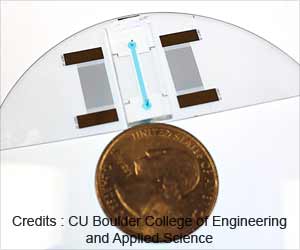Sickle cell disease (SCD) is an inherited, chronic blood disorder affecting between 90,000 and 100,000 Americans.

Instead of producing healthy red blood cells, individuals with the disease produce abnormal, sickle-shaped cells that cannot easily move through blood vessels and deliver adequate oxygen to the body's tissues and organs. Blocked blood flow as a result of an accumulation of these sickled cells can cause severe pain and organ damage and increase a patient's risk for infection.
While SCD was formerly considered a childhood disease because patients rarely lived beyond their teens, thanks to improvements in treatment, an increasing number of SCD patients are living well into adulthood. While effective treatments are extending life expectancy for these patients, doctors and patients face new challenges to help ensure that the growing adult population of patients with SCD can receive adequate care to manage their disease over the long term. New research being presented at the 2012 ASH Annual Meeting examines a number of factors surrounding care for SCD patients; researchers conclude that SCD patients tend to rely more on emergency departments to manage acute events (e.g., infection, pain, and acute chest syndrome) related to their disease as they transition from childhood to adulthood.
Data confirms that these patients are also hospitalized more frequently than the general population, resulting in significantly higher overall costs and burden on the health-care system. The studies identify opportunities to improve the health system, including improving continuity of patient care and education for patients. They also provide evidence to encourage the public health community to continue to develop and refine critical initiatives that will help these patients as they transition from pediatric to adult public and private health insurance coverage. "While we have made many advances in the treatment of sickle cell disease, this research reveals the important challenge we as physicians continue to face in ensuring that the medical system supports timely access to needed preventive and disease management protocols for our patients," said ASH President-Elect Janis Abkowitz, MD of the University of Washington School of Medicine in Seattle.
"For health-care providers, it is important to consider how we can address the needs of patients transitioning into adulthood and avoid unnecessary trips to the emergency department – steps that will improve the health-care system for everyone." Highlights of the SCD-related studies presented during the 2012 ASH Annual Meeting include:Age-Related Emergency Department Reliance and Healthcare Resource Utilization in Patients with Sickle Cell Disease Background: Study investigated age-related patterns of emergency department reliance (EDR) and associated health-care costs by reviewing Medicaid data from more than 3,200 pediatric SCD patients, including those transitioning from pediatric to adult care.
Presenting Author: Benjamin Ansa, MD
Education programs directed to the emergency department as the most common site of care for young adults with SCD may be valuable in promoting disease management and prevention. More research effort is needed to understand the variation between states in the enrollment of SCD patients in the Medicaid program. Acute Healthcare Utilization for Patients with Sickle Cell Disease within a Community-based Hospital System. Retrospective chart review conducted among SCD patients at a single center, examining 14- and 30-day readmissions and emergency department (ED) encounters (563 total acute care events).
Advertisement








